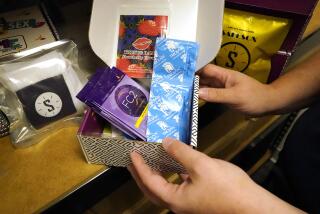Our Lives Depend on AIDS Education
- Share via
After some earlier wrangling, U.S. Surgeon General C. Everett Koop and Secretary of Education William J. Bennett have agreed that the country’s efforts to prevent the spread of AIDS should begin in the middle-school years. Now parents and educators must find a clear rationale and sensible goals if AIDS education is to succeed.
To bolster such support, concerns about the possible side effects of education concerning AIDS, or acquired immune deficiency syndrome, must be addressed. Few can think about teaching sixth-graders about this link between sex and death without having palpitations. The deepest fear among opponents of early education about AIDS is that information about the disease will be taught in a value-free way--that is, homosexual behavior without protection is just another risky behavior like riding a motorcycle without a helmet--and will therefore increase homosexuality.
But homosexual behavior may or may not change with the advent of AIDS education in the schools; evaluation data must speak to that. We do know that the determinants of homosexuality are substantial and complex, and that the incidence of homosexuality has been stable in recent decades. Given the great and tragic numbers of gay men who are dying from AIDS, it is unlikely that a homosexual life style will suddenly develop an enhanced appeal.
The point to be made, though, is that teaching about AIDS as a homosexual phenomenon is misleading and is not the plan of AIDS educators. This disease has a growing claim on the bodies and lives of heterosexuals.
The fight against AIDS is also a fight against the other “epidemics” that parallel the AIDS crisis--sexually transmitted diseases, teen-age pregnancy and drug abuse. Adolescents currently contract more than 5 million cases of sexually transmitted diseases annually. Almost 50% of teen-age females will have intercourse before their 18th birthday, and they most often do not practice “safe sex.” Intravenous drug-taking is reportedly on the increase.
It is too soon to know whether AIDS education will change sex and drug-related practices that promote the transmission of AIDS. Family-life educators have a growing sense of what young adolescents can understand about AIDS and its prevention, but the efforts are new and the knowledge gap about youth sexuality is large. Appropriate developmental material must be prepared.
AIDS education of younger children has broader goals than teaching about “safe sex.” It informs them of the way in which the AIDS virus is transmitted; familiarizes them with means for self-protection against sexual assault, injury and disease, and helps them make responsible choices for healthy intimacy. Some schools are also teaching about AIDS in science classes, since the study of the disease includes lessons in epidemiology, immunology and reproductive health.
Still, education to prevent AIDS may work no better than education to prevent unwanted pregnancies--teaching it the same way will ensure only limited success. Sexuality education is too frequently taught abstractly and in a way that it is comparable to teaching driver’s education using Popular Mechanics as the text. While AIDS education for high-schoolers is not just condom education, it needs the courage to inform youth that using a condom or insisting that others use a condom during sex will help prevent not only AIDS but also other sexually transmitted diseases and adolescent pregnancy. In time this will save lives.
The alternative is to let parents, physicians or the kids themselves teach about the prevention of AIDS. Yet few parents are willing or able to provide needed contraceptive information to their children. Many fewer parents would adequately and accurately tackle a talk about AIDS. A recent study indicates that physicians will not get the job done. Only 22% of teen-age girls and 4% of the boys reported that their doctors ever asked them if they were sexually active, despite American Academy of Pediatrics guidelines recommending this from the time a patient turns 12 years old. Peers are a sure bet to talk with each other about AIDS and how it is transmitted, but gambling on the usefulness of such peer instruction to save lives is deadly folly.
Parents should provide the moral view about sexuality while schools provide the scientific one. The provision of scientific information concerning AIDS is a starting point for protecting our next generation. Family-life education that includes content about AIDS can also assist parents and youths to talk about the disease. The curriculum under preparation in San Francisco has exercises to promote that goal--students practice talking with parents about AIDS.
We should proceed with AIDS education and accept the challenge of learning what information students of each age can use and how teachers can communicate accurate and activating information. Many teachers will find this as daunting as parents and government officials do. They must do their best, however, because lives depend on it.
More to Read
Sign up for Essential California
The most important California stories and recommendations in your inbox every morning.
You may occasionally receive promotional content from the Los Angeles Times.













